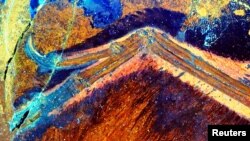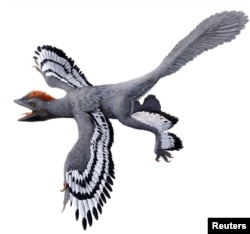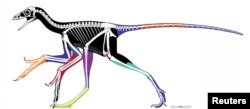A technique using high-powered lasers to reveal hidden soft tissue alongside bones in fossils is giving scientists insight into one of the major evolutionary transitions in the history of life: small feathered dinosaurs taking flight as birds.
Scientists said Tuesday that they had used the method on fossils of the chicken-sized, feathered, birdlike dinosaur Anchiornis that lived in China about 160 million years ago, finding it possessed drumstick-shaped legs, arms similar to the wings of some modern gliding and soaring birds, and a long, slender tail.
There has been a debate about whether to classify this Jurassic Period creature as a bird, considering its avian features. Either way, it boasts numerous skeletal and soft tissue characteristics found in birds and lived close to the time when birds diverged from their birdlike dinosaur ancestors.
Archaeopteryx, which lived in Germany about 150 million years ago, long has been considered the earliest-known bird.
If a person had a chance to see Anchiornis alive, the reaction might be, "That's a weird-looking bird," said University of Hong Kong paleontologist Michael Pittman, who helped lead the study published in the journal Nature Communications.
Technique makes tissues glow
The scientists employed a technique called laser-stimulated fluorescence, or LSF, that directs high-powered lasers at the fossils in a dark room to make unseen soft tissues like skin and the shape of the muscles beneath it glow.
The study produced the first highly detailed body outline of such a feathered dinosaur, "a real landmark in our understanding of avian origins," Pittman said.
The study revealed it had a shallow area of soft tissue in front of the elbow, called the propatagium, that is the leading edge of bird wings and is crucial for flight. But it is unclear whether Anchiornis could get airborne.
"Some scientists believe it could glide based on the long, robust and feathered arms — wings — it has, but others disagree because its flight feathers are not well designed for flight," said the study's other co-leader, paleontologist Xiaoli Wang of Linyi University in China. "We believe it probably had some kind of aerodynamic capability."
Anchiornis was covered in feathers resembling those of modern birds. It had foot scales like those of a chicken. But it lacked the bony breastbone, or sternum, and short tail skeletons found in modern birds. It had small, sharp teeth like those of the earliest birds, and may have eaten small animals like lizards.









